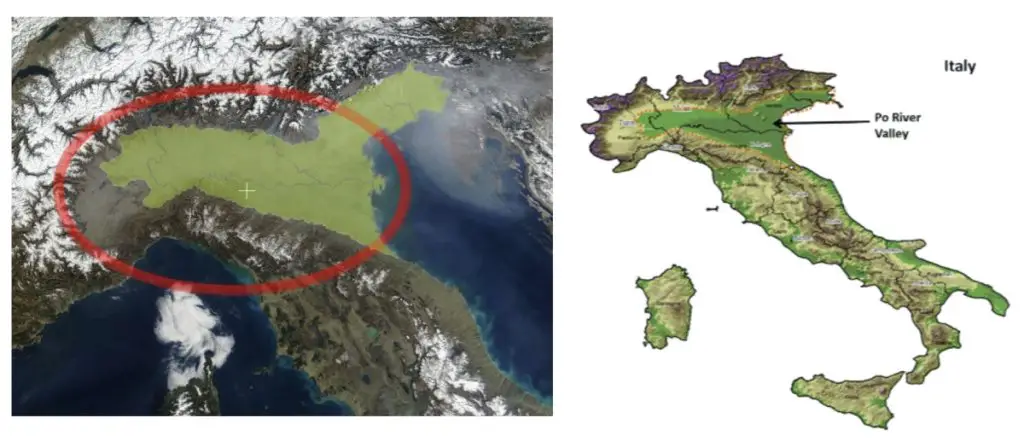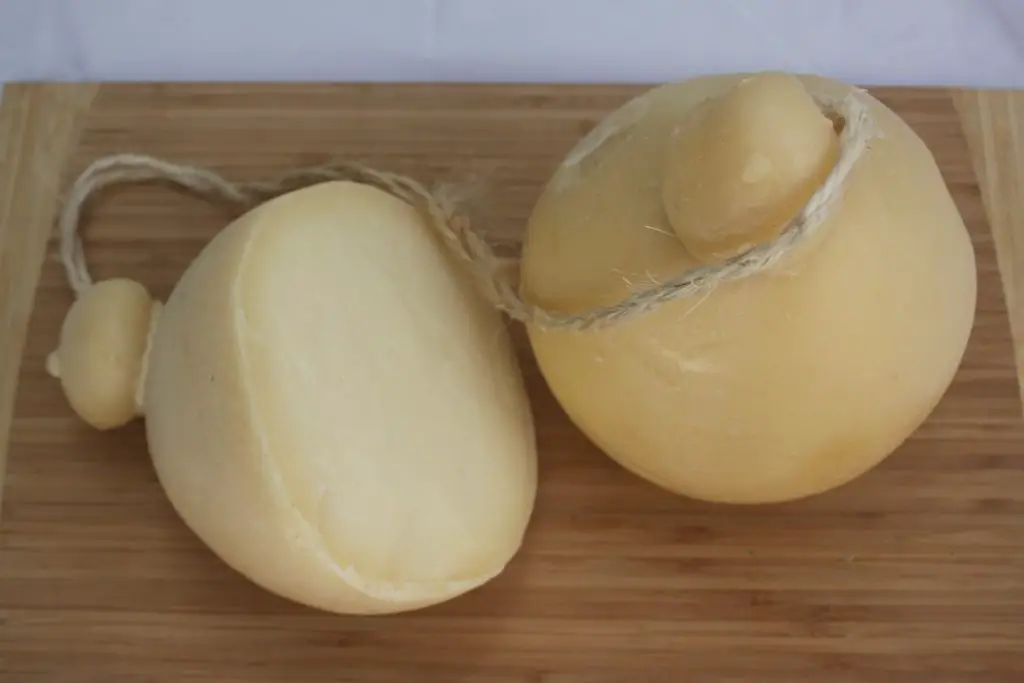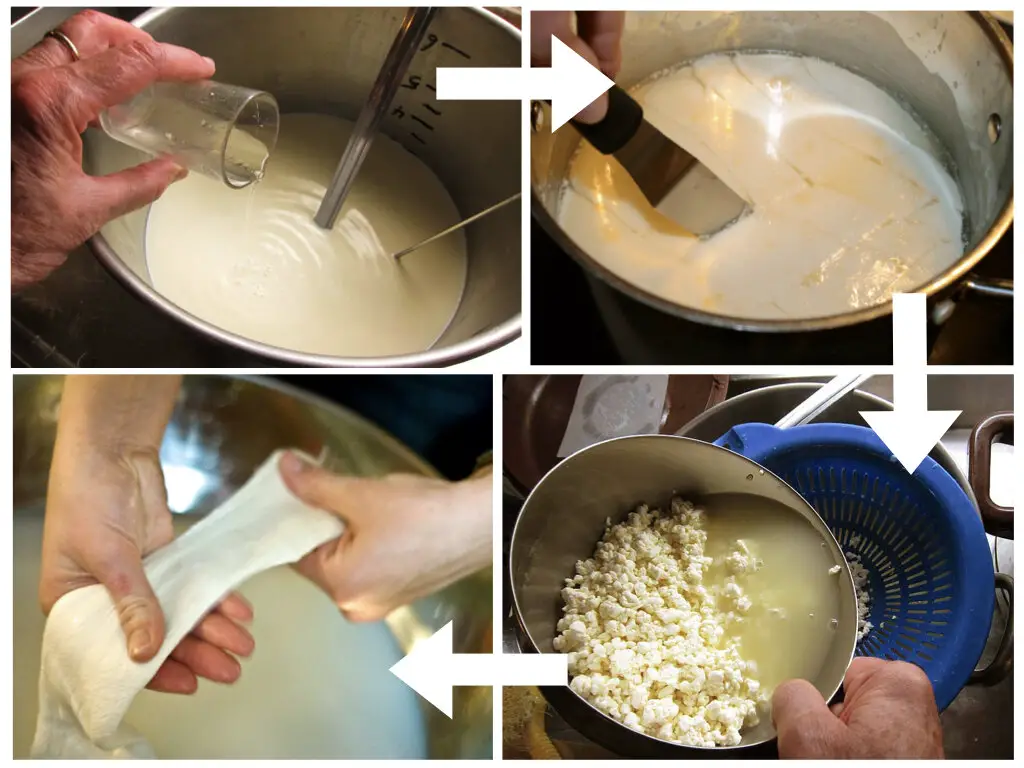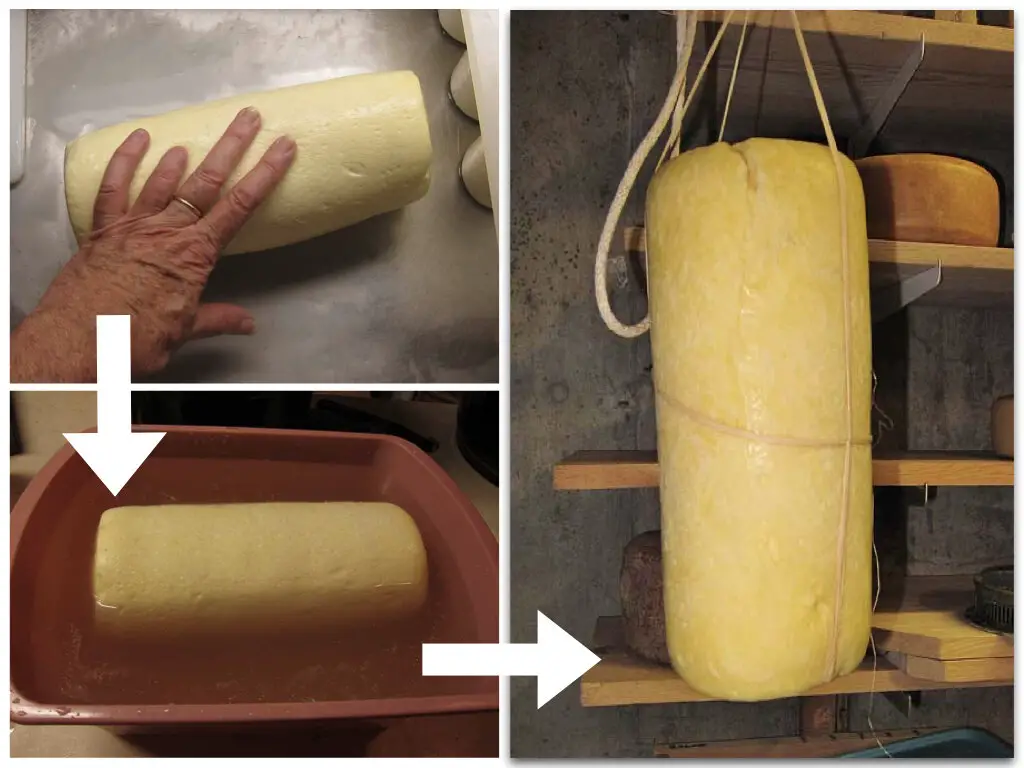Everything about provolone in 3 minutes
What is provolone?
You’ve probably heard of provolone cheese many times before, maybe even tasted it, but what actually is it? Luckily, you’ve found the answer to your question right here.
Provolone (pronounced [pro·vo·lo·ne], English: /ˌprō-və-ˈlō-nē, ˈprō-və-ˌlōn/) is a type of cheese with origins in Italy. It is a semi-hard, smooth-textured cheese that is made from cow’s milk and is white or pale yellow in color.
The flavor ranges greatly, from mild, buttery, and slightly nutty to sharp and spicy, and sometimes with a hint of smokiness.
But why does it have a rancid taste?
The name Provolone means “large provola” which means “globe-shaped” in Neapolitan.

Let’s take a step back…
Although provolone originated in Southern Italy near the city of Naples in the late 19th century, most production now occurs in the northern Po River Valley region, specifically in Lombardy and Veneto.
Nowadays, provolone cheeses are also manufactured in other areas of the world, such as the United States. You can even get real provolone like this one now on Amazon, straight from Italy!
Regardless, the European Union has provided Provolone del Monaco and Provolone Val Padana with a Denominazione di Origine Protetta (DOP) or Protected Designation of Origin (PDO) label, which protects the authenticity of these cheeses by limiting their production to certain areas of Italy, manufacturing methods, and ingredient selection.
But…
Be aware! Always look for reputable brands such as Auricchio and Silano.
In early days, provolone was formed into a round shape. However, with the 1900s came the invention of molds which now allows for additional shape options.
A tube-like or salami shape is now more common due to ease of hanging and slicing.
How exactly provolone is made
The process of making provolone cheese begins with fresh milk and the addition of whey and rennet to create a curd, which is then separated from the whey.
Provolone is an aged, pasta filata cheese, meaning “spun paste” or “stretched-curd,” a production method which involves kneading and stretching the curd while hot before forming it into shape.
This is similar to mozzarella, but differs in that provolone is aged.
The provolone is then bathed in brine, cooled, and subsequently covered in an outer layer of wax or plastic rind. The cheese is hung in the aging cellar by rope because it is initially too soft to sit on a shelf.
Provolone is often formed into pear, tube, or cone-like shapes, therefore explaining its round shape.
Two main varieties of provolone exist: provolone dolce is mild-tasting as it is aged for 2 to 3 months using calf’s rennet, while provolone piccante is aged with goat’s rennet for at least 4 months up to a few years, creating a much sharper flavor. Either type of provolone can also be smoked.
The longer the aging process, the darker the yellow color will be. The dolce version is of softer texture, while piccante is harder and crumblier (71).

Comparison of Italian vs. American provolone
The flavor of provolone cheese is highly influenced by the ingredients used, which tend to be unique to certain regions.
Thats why…
When many Americans think of provolone, they likely think of a very mild-tasting cheese. This is because American provolone, especially those found in supermarkets, tend to closer resemble the mild dolce form.
This indicates the type of ingredients used and a shorter aging time.
Authentic provolone, especially provolone piccante of longer aging time and sharper flavor, is more difficult to find in the United States.
Italian provolone is usually aged for at least 4 months, giving it a sharper flavor with longer duration. Additionally, American manufacturers often use enzymes from a non-animal source in order to offer a vegetarian-friendly option, thus further affecting the flavor intensity.
More importantly,
Where do you get good provolone in the United States?
Provolone that is found in American supermarkets as wedges or pre-sliced packages or sliced at the deli is typically not of the same quality as the authentic Italian version.
United States based manufacturers offering more traditional provolone cheeses are few and far between. There are some based in Wisconsin, but their products are not available in most grocery stores.
Oftentimes, the best place to get quality provolone in the United States is online.
Several online retailers offer imported products which can be ordered and shipped to you. Additionally, Amazon offers several options for a more traditional version of provolone, many of which claim to be imported from Italy as well, such as this one.
These have mixed customer reviews, with some consumers skeptical of their authenticity, while others provide rave 5-star reviews.
You may also be able to find what you’re looking for at a local or online specialty cheese shop or Italian market like Fortuna’s.
How is provolone best used?
The different flavor profiles of provolone cheeses allow for diverse purposes. Provolone is often considered a sandwich or table cheese.
It is great for melting due to the stretching and pulling of the curd during processing. Because of this, it is suitable for use melted on burgers or chicken, in quesadillas, or baked into pasta dishes or casseroles.
Provolone is commonly used on grilled sandwiches, and has famously been a component of the Philadelphia cheesesteak.
It can also be substituted for mozzarella on pizza for a bit fuller of a flavor.
The sharper flavor of provolone piccante can be compared to parmesan, making it ideal on a cheese platter, antipasto, or grated over pasta or salads.
It is also often eaten as a dessert cheese!
Smoked provolone lends itself well to Italian sandwiches, on cheese and crackers, or paired with tart apples or green grapes.
In general, provolone cheese goes well with full-bodied and aged red wines. Chardonnay is a suitable option for those who prefer white wine, while those with a tasting for beer should pair with a pale ale.
Beginner-friendly homemade provolone in just 5 ridiculously easy steps!
Has reading this made you wonder if it’s possible to make your own provolone cheese at home? The answer is yes, you can!
Ingredients:
- 1 gallon pasteurized whole milk
- 1 packet thermophilic starter
- ¼ tsp. lipase powder (dissolved in ¼ cup cold water)
- ¼ tsp. rennet (dissolved in ¼ tsp. cold water)
- 2 lbs. cheese salt
- 1 gallon cold water
Equipment:
- Large pot
- Thermometer
- Large colander
- Slotted spoon
- Curd knife
- Large bowl
- Gloves

This picture is the summarized steps for the first part. Do note that some steps were skipped ahead. 
Brine it then dry it! you are all done, perfectly.
Instructions:
- Pour the milk into a pot on the stove. Slowly heat the milk to 97°F, stirring frequently.
- Add the starter to the heated milk and mix in with up-and-down motions using slotted spoon. Continue to stir for 1 minute, then cover the pot and let ripen undisturbed for 1 hour. Maintain temperature at 97°F.
- Add the dissolved lipase mixture, stirring in well. Let rest for 10 minutes.
- Add the dissolved rennet, again stirring in for 1 minute with up-and-down motions. Cover and allow to sit undisturbed for at least 20 minutes.
- Once a firm gel has formed, you can test to make sure the curd is ready for cutting by inserting a clean finger at a 45-degree angle and lifting the coagulated curd. Look for a clean break with whey filling in this space.
- Cut the curds into 3/8-inch cubes. To do this, make parallel cuts about 1/2-3/4 inches apart, then turn the pot 90 degrees and repeat. Cut crosswise with spoon or ladle. Allow to rest for 10 minutes.
- Slowly heat the curds while gently stirring. Temperature should increase by 2°F per minute until 144°F. Turn heat off, and let the curds rest for 15 minutes. The curds should be cooked throughout and have moderate resistance when pressed between fingers.
- Scoop the curds out of the whey and into colander. Place colander over the pot of warm whey to maintain curd temperature of at least 105°F, and rest for 30 minutes.
- Dip a small piece of curd into clean water heated to 180°F and attempt to pull it. If it does not stretch, put it back in the colander and re-attempt every 15 minutes until it stretches and is smooth and shiny. Then cut the curd into 1-inch slices and place in the hot water, letting them sit until all pieces stretch easily.
- Wearing gloves, stretch the curds and form into one large ball. Shape into the form of a jug, then make a small indentation at the top where the opening of a jug would be. Work the curd up the neck of the jug, into the indentation. You may need to dip the curd back into the hot water if it becomes difficult to work with.
- Once finished working the cheese, put it into a bowl with ice water. Create a brine from 1 gallon of water and 2 pounds of salt.
- Remove cheese from ice water, and place into the brine. Chill and let soak for 2 hours.
- Remove cheese from brine and use paper towels to pat dry. Tie a rope or cord around the small end of the cheese and hang in ripening area with 52-58°F and 80-85% humidity. Age for 2 to 12 months.
- If mold appears, remove using a cloth soaked in brine. Cheese can be rubbed with oil after 1-2 weeks to reduce mold growth.
Don’t have time for that? Get your Italy-made provolone like this one now via Amazon right away!
I spent 2 weeks creating this comprehensive list of over 100+ types of cheeses!


